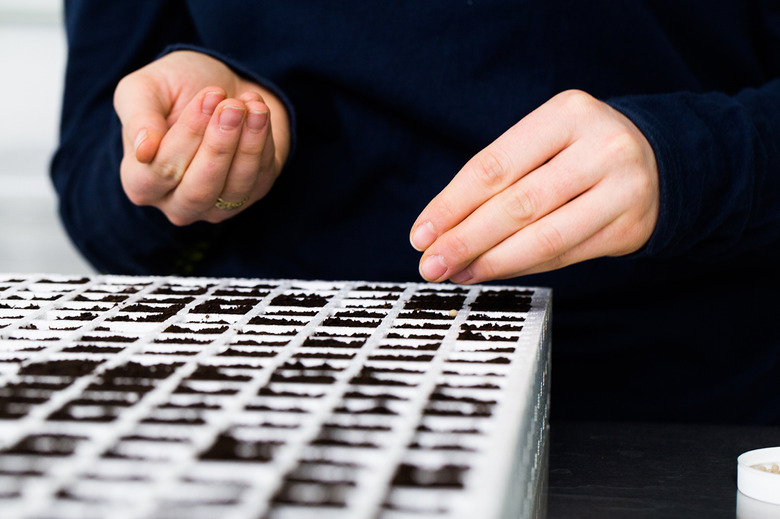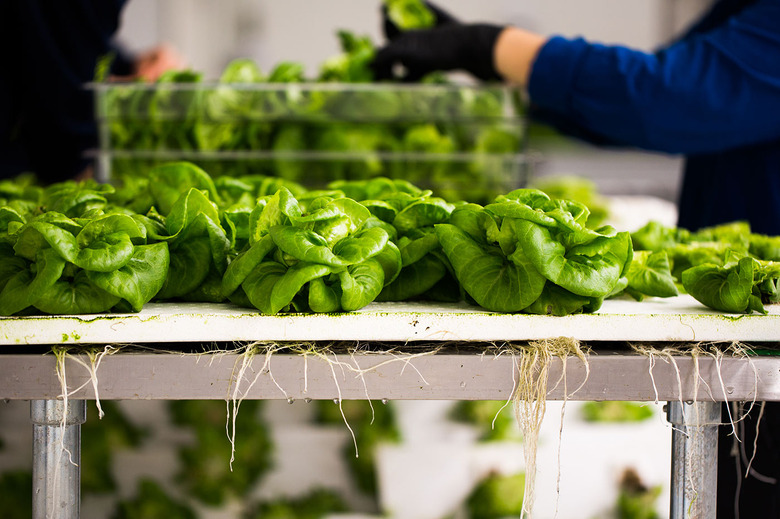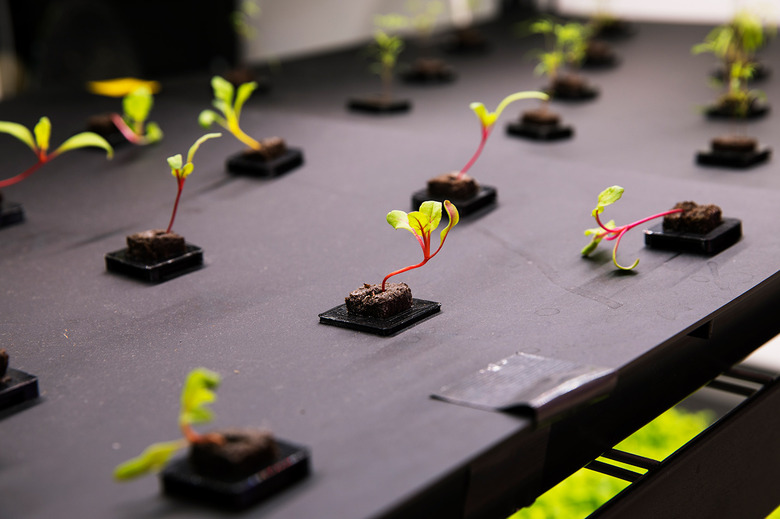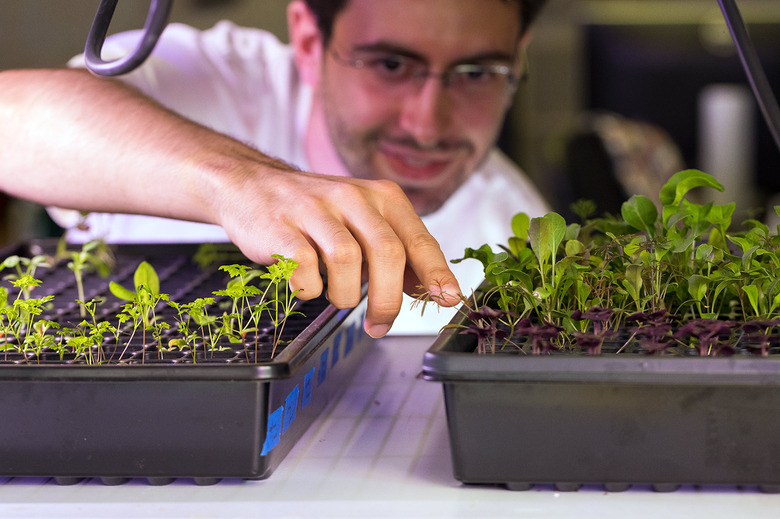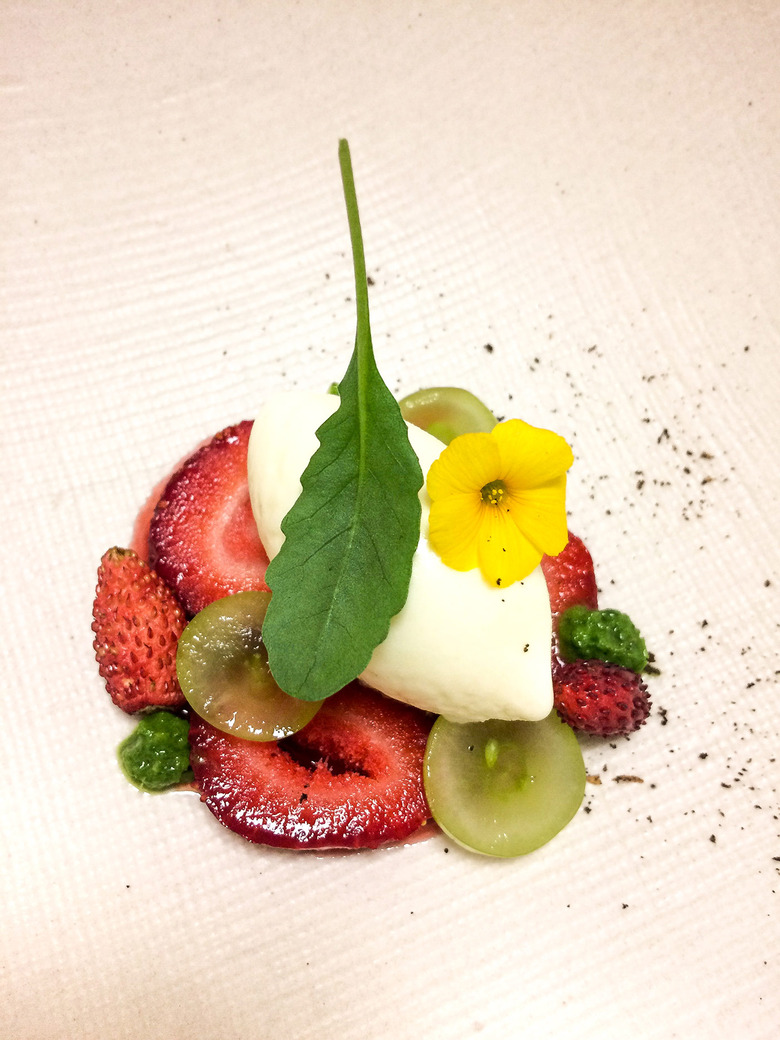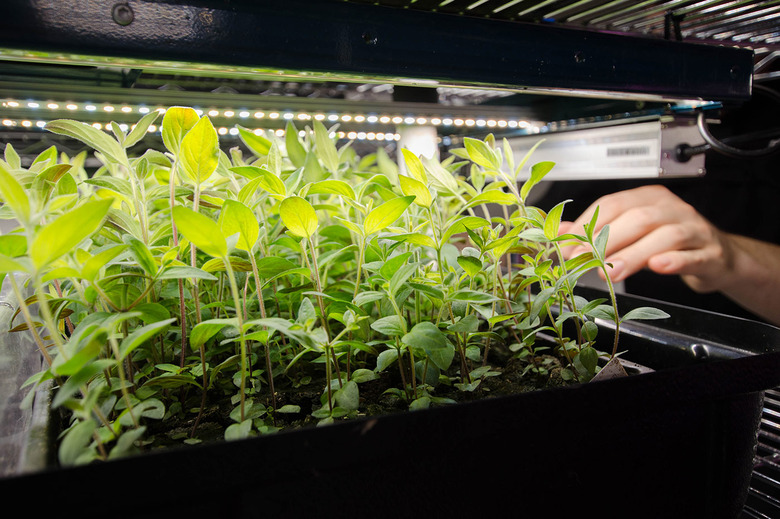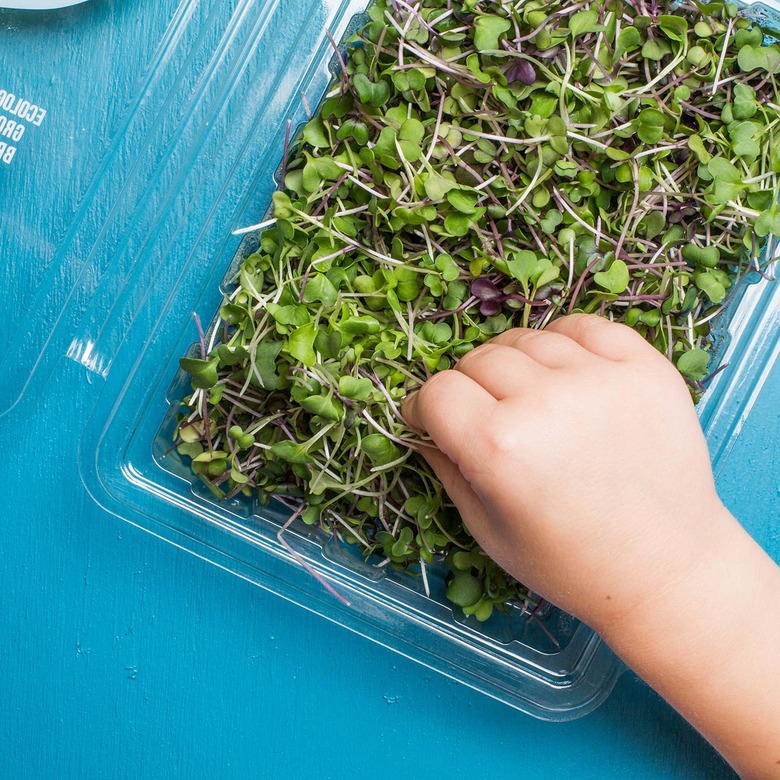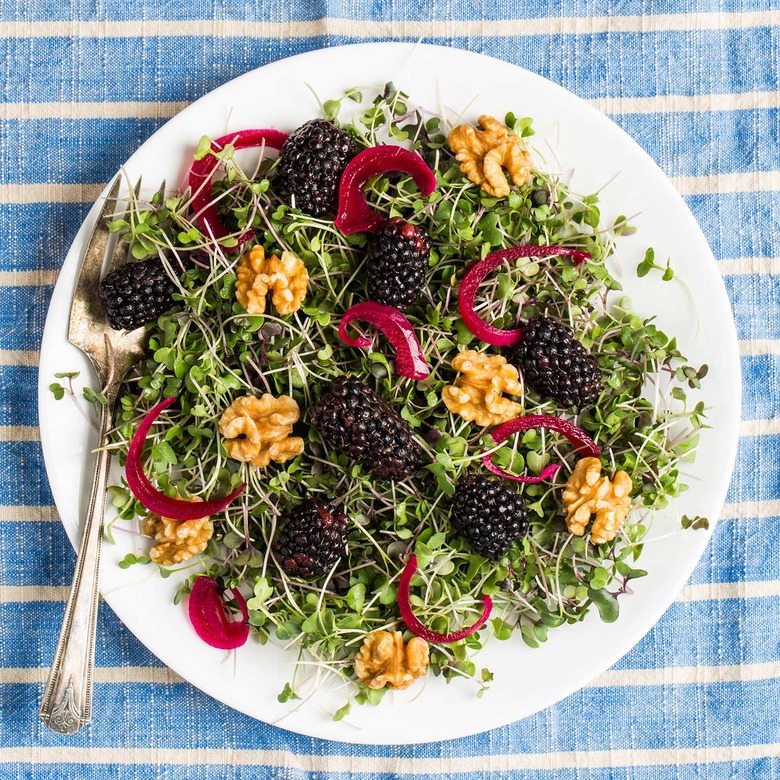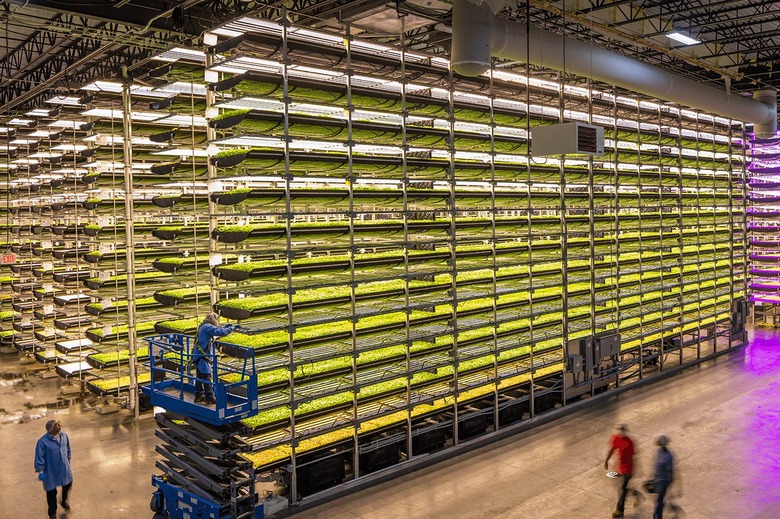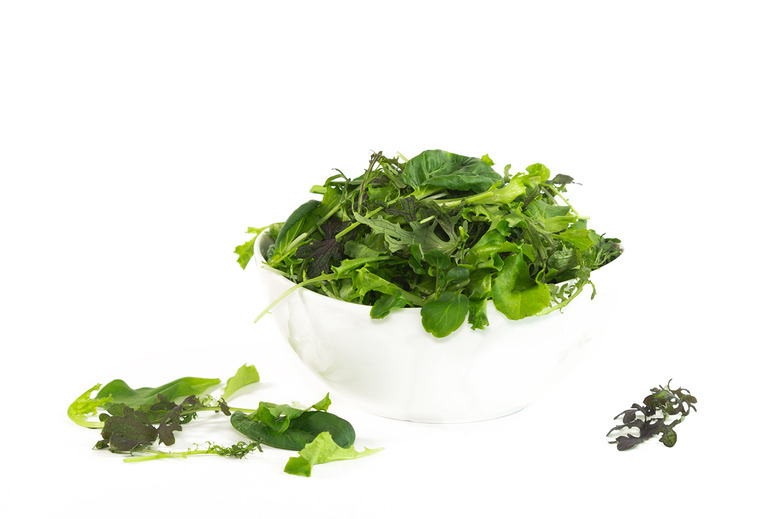New York's Vertical Farming Boom
Beneath one of NYC's best restaurants, down a hallway you could find only if you knew where to go, rows of heady, hydroponic herbs, sticky with residue, grow under LED lights. Across the East River, in an old factory, a small lab of growers tinker with their own seedlings, while a greenhouse just two miles away grows its own special line of potent plants.
No, we're not talking about weed—although in many ways, the, ahem, budding industry helped pave the way here. We're describing the field of indoor farming, much of it hydroponic, catering to home cooks and restaurant chefs, that's growing at an incredible clip around the country. And it's booming where you'd least expect it: none other than New York City.
It's not just a potential antidote to the unsustainable machine of industrial agriculture. It's also a new frontier for the culinary world, and you're about to reap the benefits.
Just ask Tom Colicchio, an investor in Bowery Farming, a seven-month-old hydroponic vertical farm, which just recently started selling greens to tristate area Whole Foods. The chef calls the company the "new paradigm for farming," one that he's "really excited about." At his new Downtown NYC restaurant, Temple Court (previously Fowler & Wells), the Top Chef judge garnishes crudo with Bowery's wasabi arugula—a spicy green bursting with flavor. Or ask Claus Meyer, an adviser at Brooklyn Navy Yard-based start-up Farmshelf, or Alex Guarnaschelli, who sources from newcomer Farm.One, which has spaces at the Institute of Culinary Education and underneath the restaurant Atera in Tribeca. Each one of these chefs is a champion for the undeniable advantage of indoor farming: fresh, unique and local produce available all year round.
 Andrew Whitcomb, executive chef at Norman | Photo: Farmshelf
Andrew Whitcomb, executive chef at Norman | Photo: Farmshelf
Exact methods vary, but generally speaking, hydroponic farms grow greens, herbs and flowers in soilless containers under LED lights in highly controlled climates. That means 365 days of ideal growing conditions, with efficient water use and minimal waste. They're also often stacked vertically, which cuts down on the need for square footage. Some farms, like Edenworks in Brooklyn, use fish and aquatic life to feed their ecosystems, while others, like AeroFarms, don't use hydroponics at all but rely on a specifically crafted aeroponic mist.
It might sound unnatural, but these farms are actually growing their goods without the use of herbicides or pesticides. Bowery cofounder Irving Fain implores skeptics to rethink what organic really means, pointing out that "organic standards were written at a time when a lot of the technology we have access to today didn't even exist."
And then there's the magic word: local. These indoor farms are able to grow and sell within mere miles of the restaurants or homes to which they're catering, no matter the season.
As Great Northern Food Hall's Jonas Boelt—who works with Farmshelf—explains, "Back in Denmark, my team and I would go forage for ingredients daily. As that is impossible in New York City, harvesting Farmshelf herbs is the next best thing."
When you look at it this way, it makes sense that NYC and the surrounding area, against all odds, has become a major hub for ag tech. The high demand from the most competitive dining scene in the country, coupled with the short growing season, actually makes for quite fertile ground. Add to that the great public transportation, Farm.One CEO Robert Laing points out, and distribution becomes even more sustainable.
Though the space may seem crowded, every company has a distinct mission. AeroFarms and Edenworks focus on large-scale production, boxing greens to sell at the supermarket. Bowery does the same but also works with Colicchio to expand its culinary partnerships.
Farmshelf builds units to put into restaurants—like the Great Northern Food Hall and Brooklyn's Norman—hotels, corporate cafeterias and eventually home kitchens, "putting the technology into the hands of the consumer and bringing the farm right into the building," as cofounder/CRO Jean-Paul Kyrillos says.
 Unique greens growing at Farm.One in TriBeCa | Photo: Farm.One
Unique greens growing at Farm.One in TriBeCa | Photo: Farm.One
Then there's Farm.One, which focuses on providing restaurants with rare and fresh ingredients, selling to some of the hottest spots in NYC. Think Mission Chinese, Daniel, Atera, Pizza Loves Emily, Le Turtle, Locanda Verde, The Pool and The Grill.
"In general, they're buying things that are normally the last thing that a chef puts on the plate and the first thing the customer sees," Laing says of a list of herbs and flowers that may be unrecognizable to even the proudest foodie. Multiple kinds of sorrel and basil are just the beginning. (Pizza Loves Emily is fond of the Pluto basil, while the blue spice basil's vanilla notes would compliment any dessert.) There's also papalo, a limey herb from Central Mexico that's great for cutting the fat on rich dishes, as well as medicinal-tasting yarrow and sweet anise hyssop. Farm.One even grows something called cheese plant, which tastes just as funky as it sounds.
Beyond the accessibility to fresh or rare plants—and the intense flavor that comes along with them—another culinary win for these farms is that they guarantee chefs a certain amount of predictability and control, Boelt points out. Among the many reasons chef Tim Hollingsworth of L.A.'s Otium values his vertical garden—albeit an outdoor one—is for the control it gives him over a plant's different growing phases. For example, he can use nasturtium flowers one week or harvest them early for their capers another week.
With so many culinary perks, it's no wonder that the ag tech industry is taking off, with ambitious chefs going all in. Whether you're dining out or cooking at home, the variety of fresh and local produce is only going to get better as these farms grow, elevating the possibilities for your plate and palate—and making the watered-down, mass-harvested produce you're used to tasting even more bland. "I can't even buy herbs from the supermarket anymore," Laing says. You're next.
This month, join us as we go all in on Peak Season, taking full advantage of the bumper crop of cozy recipes, market ingredients, wine trends and entertaining gear to help you live your best fall.
Bowery Farming
New microgreens seeds being added to a planter at Bowery's NJ warehouse.
Photo: Bowery
Greens at Bowery Farming
Greens growing at Bowery's NJ warehouse, getting ready to be boxed and sold at the supermarket.
Photo: Bowery
New Crop at Farmshelf
The brand new microgreens growing at Farmshelf's headquarters in Brooklyn's Navy Yard.
Photo: Tasting Table
Farming at Farmshelf
FarmShelf's botanist attending to some microgreens at the space in Brooklyn's Navy Yard.
Photo: Tasting Table
Garnishes from Farm.One
A dish at NYC's Jungsik, topped off with a green from Farm.One.
Photo: Farm.One
Farm.One
Herbs sprouting at the Farm.One's new TriBeCa location, which will be open for tours and tastings.
Photo: Farm.One
Greens from Edenworks
"Mighty Microgreens Personal Salad," which consists of broccoli, red cabbage, red Russian kalem, from Edenworks in Brooklyn. The farm uses aquaponics—a subsect of hydroponics that uses aquatic life in the growth process.
Photo: Sarah Crowder
Greens from Edenworks
The "Mighty Salad," a microgreens blend with blackberries and walnuts, from Edenworks in Brooklyn.
Photo: Sarah Crowder
The Aerofarms Warehouse
This 70,000 square foot farm is in Newark, NJ and has the capacity to grow two million pounds of baby leafy greens per year.
Photo: Aerofarms
Greens from Aerofarms
The "Dream Greens Spicy Mix," which consists of arugula, watercress and mustard greens, from Aerofarms, which practices aeroponics as opposed to hydroponics.
Photo: Aerofarms

